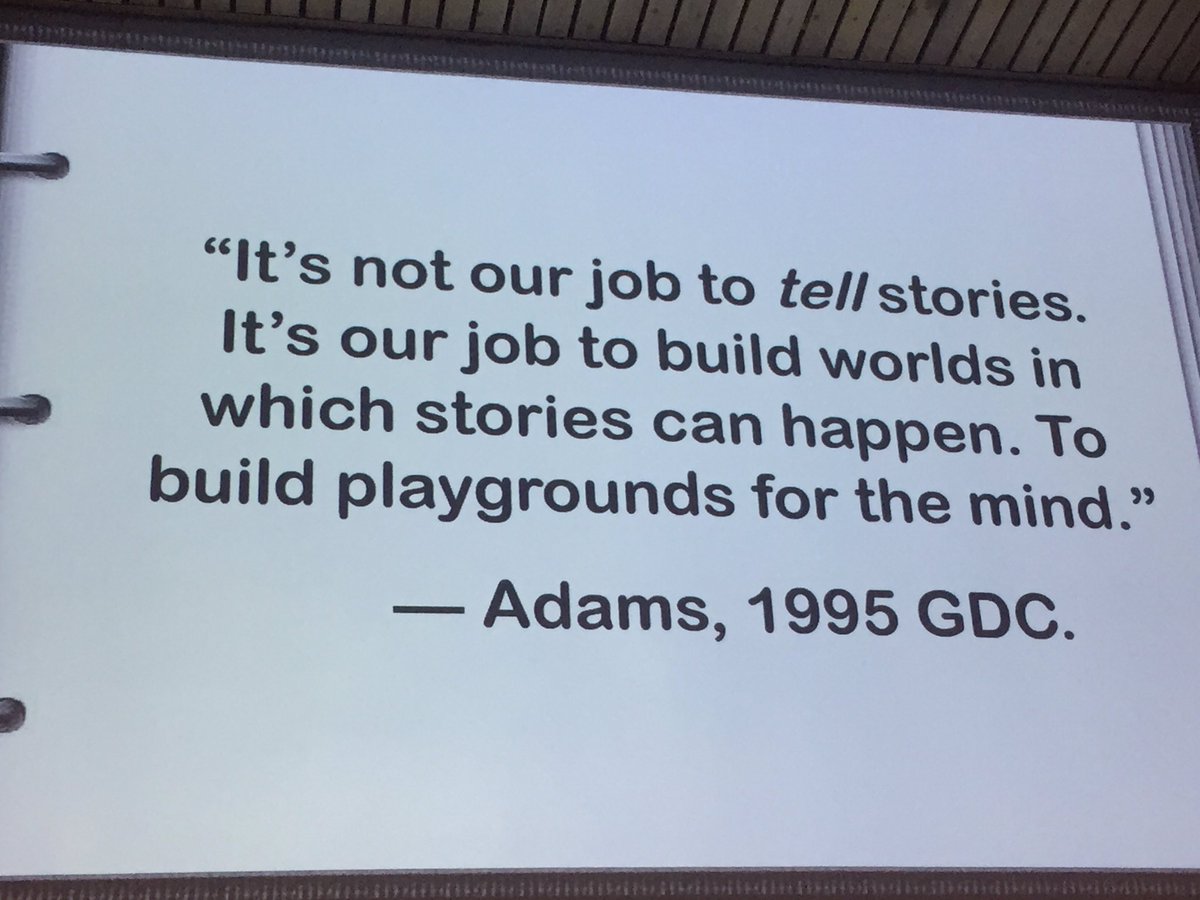Right now at @UniLeiden: Ernest Adams speaks about #interactivestorytelling. And the problems this field keeps encountering :) #gamedev 





Slides with Ernest’s understanding of 1995 on these issues. Solution? A good balance between interactivity and narrative. 







Many years later, we were mostly avoiding to face the problems. Still trying to find a compromise between author and player agency. (Last slide is his credo from 1995). 





Four traditional assumptions (slide). When you believe these you set yourself up to fail. It’s impossible to achieve all this, especially with the technology of 2005. 

Ernest Adams then started to work on his PhD. He decided for a very simple definition of narrative. Also his defs. of plot, agency and #interactivestorytelling. (Slides) 







Gameplay immersion is different from narrative immersion, as in gameplay you can have completely random events. So what makes a well-formed story (inspired by @JanetMurray): 

Ernest Adam’s model of interactive storytelling. Slides: Full model, top part, lower part. #gamedev 





His key insight resolves around the infamous Façade, which lets players type to interact, trying to save the marriage of the involved characters. The game generates a screenplay of what happened. And look, the AI fails to interpret, and Adam realized that it’s his own fault! 





Role playing is social - with social rules. Bad role play can cause the story to end! And that’s your own fault then! Playing then means to abide the laws of the game, to take the given role. There is a contract between designer and player. #gamedev 







Final part: Defining a requirements specification. What do we want the story to do? Define before you even start designing. He made a template of these requirements: designersnotebook.com 







• • •
Missing some Tweet in this thread? You can try to
force a refresh




